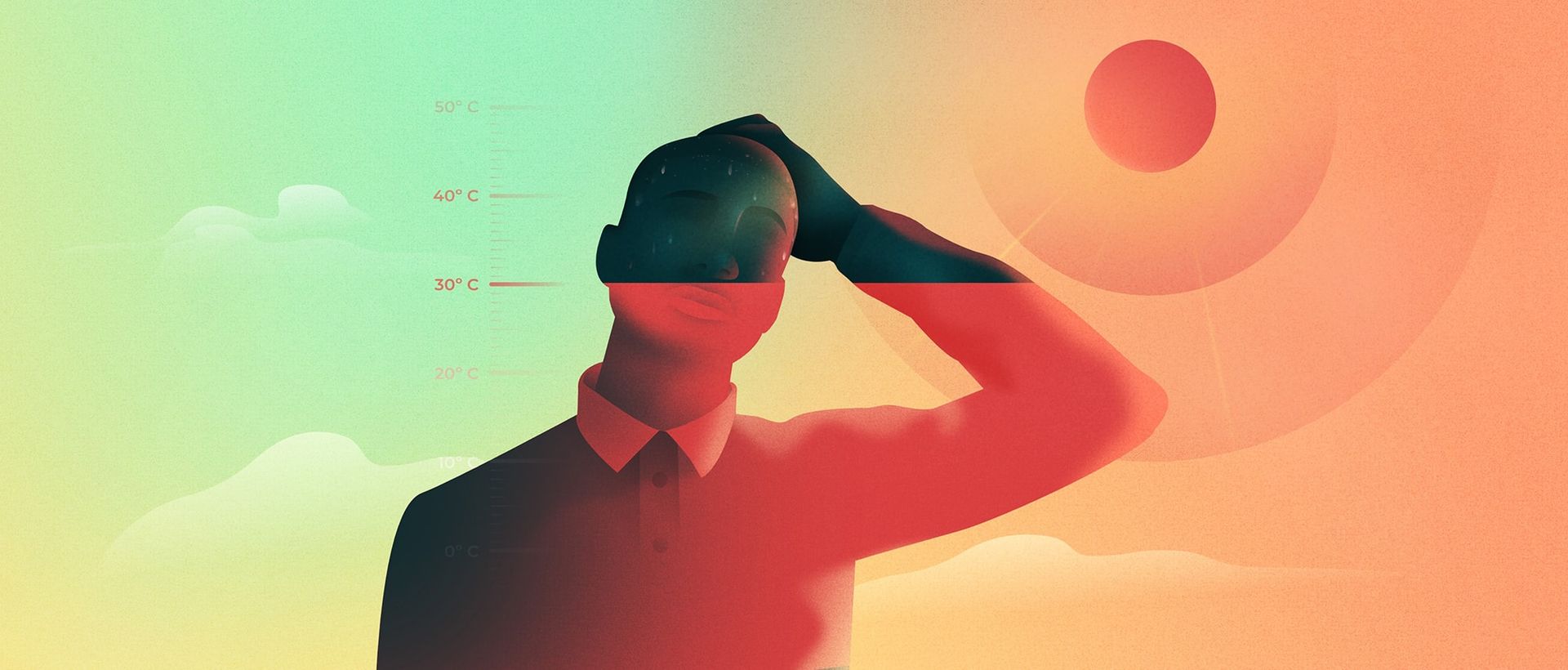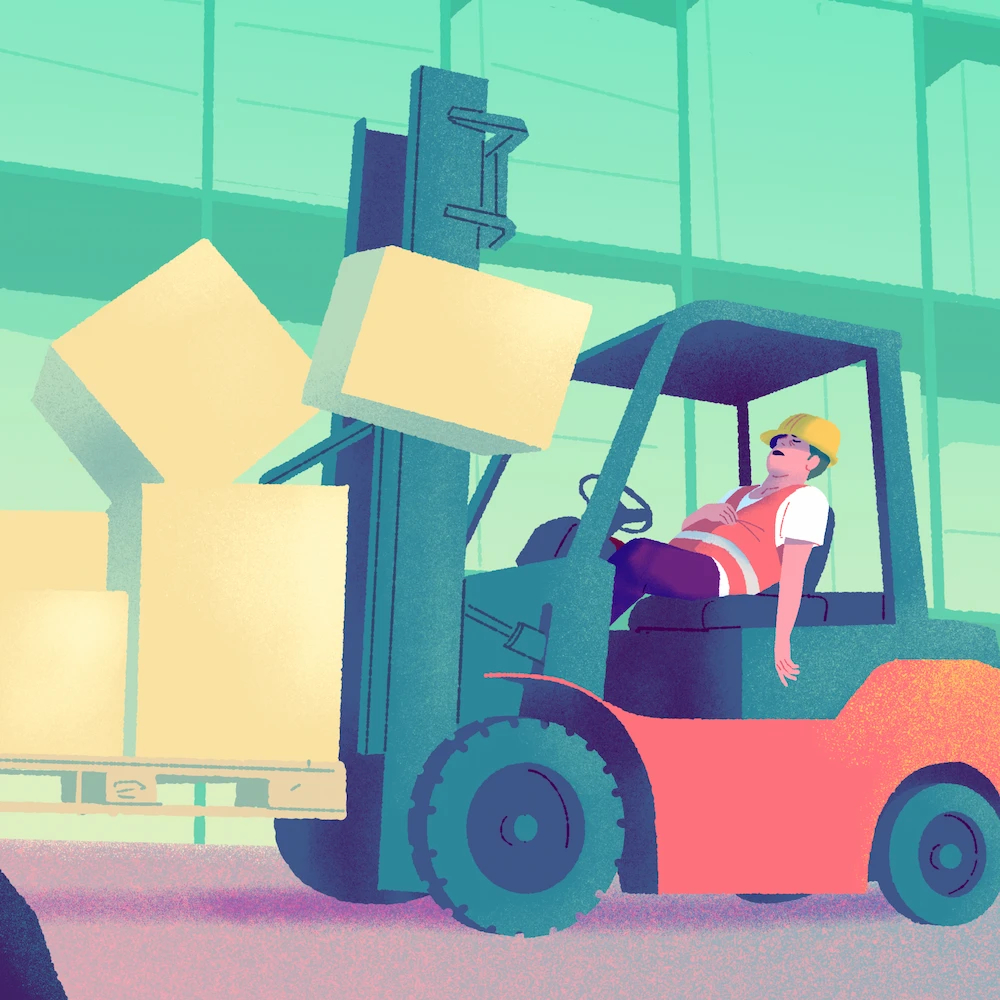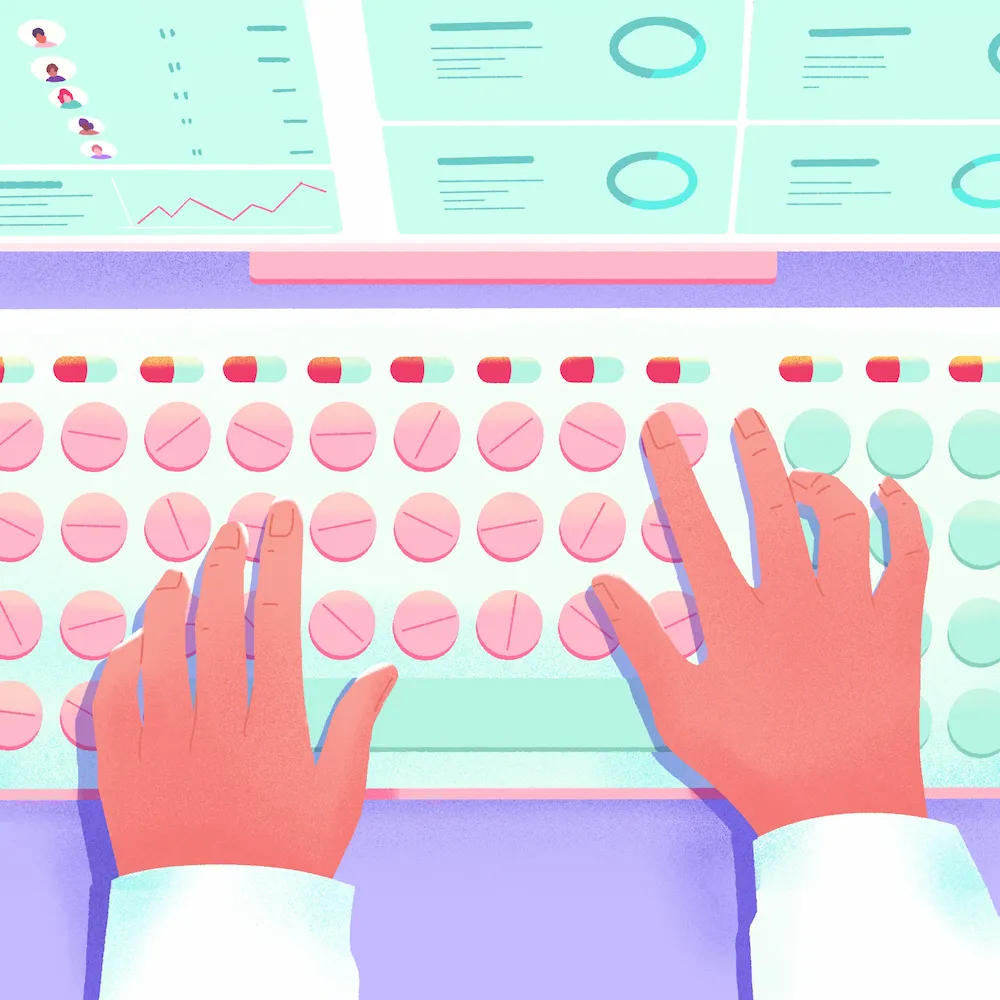Summers are now synonymous with heatwaves. There’s no escaping it.
Even short heatwaves present risks that too few businesses are aware of, and against which they fail to take action to protect their employees. The good news is that there are simple and cheap solutions that allow you not only to limit productivity losses and protect employees, but improve team morale and make you stand out as a manager.
Heat… What?
Heatwaves are defined as periods of intense heat (i.e., above 30 °C) that last three or more consecutive days. These episodes are generally characterized by clear skies that offer no respite from the sun, a high humidity ratio that makes outdoor activities more difficult, and sometimes violent thunderstorms in the evenings. Under these conditions, workers are exposed to a number of hazards, including:
- Exhaustion and drowsiness
- Nausea and vomiting
- Headaches
- Fainting
- Extreme thirst
- Sunstroke (heatstroke)
All of these symptoms can also affect employees psychologically, rendering them less productive, as well as provoke anxiety, anger, and disinterest. This is understandable: few people are willing to give their 110% when it’s already a struggle just to be there.
Helping Employees Beat the Heat
Evaluate the Environment and Its Risks
The first thing to do is always to take a critical look at the work environment and the tasks to be done. Start by identifying potential risks and their severity, so you can address them in advance. For example, a work environment with air conditioning and readily available cold water probably won’t put staff too much at risk. But a business where employees have to do physical work outside may present more risks.
Promote Comfort
There are many advantages to promoting comfort, both for your employees and for yourself. For starters, employee productivity will typically go up. It goes without saying that certain tasks are much more difficult, sometimes even impossible, when the environment makes it hard to move and breathe. Greater comfort also helps avoid accidents.
If you fear that such accommodations will beget additional costs, think of what an employee fainting would cost you.
You’ll additionally build a reputation as a manager who really cares about their employees’ wellbeing. You could, for example, equip your registers with fans or hand out good old Mr. Freezes after lunch. If the environment allows, you can also relax your dress code for a while if it doesn’t normally allow for shorts.
Stay Hydrated
Always provide employees with a readily accessible source of water, such as a cooler. Sources of shade, like parasols and tarps, can also help tackle dehydration and prevent sunburns. In general, during an eight-hour shift, the average person should drink at least 650 ml of water. Physical activities and heat can easily double these needs, depending on the individual. This being said, calculations are unnecessary: the best indicator is simply to check in with your thirst.
Limit Heat Exposure
It could be wise to split the shifts of employees who work outdoors (e.g., waiters on a terrace) so they can switch places with those who work indoors. Your schedules could also have built-in short breaks at regular intervals, according to the work to be done.
Turn Down the Heat with Scheduling
As a manager, the schedule you create can make a big difference. By being proactive with how shifts are assigned, you can create a cooler, safer environment—even when the forecast says otherwise. Try some of the following strategies if they fit your business.
- Shorter shifts during peak heat: Break long shifts into two shorter split shifts, especially when they fall during the hottest parts of the day (typically 12–5 p.m.).
- Rotate day and evening shifts: Give employees a break from relentless heat by alternating between daytime and cooler evening or early morning shifts. Rotating shifts can help reduce cumulative heat exposure.
- Stagger break times: Ensure employees aren’t all on break at once, so you can rotate staff into cooler areas like shaded zones or air-conditioned rooms more frequently.
🥵 Imagine a restaurant kitchen crew during a July heatwave. Rather than keeping the same team on for a 10-hour stretch, a manager could use Agendrix to schedule two 5-hour overlapping shifts, giving staff ample time to recover in cooler environments. On top of that, rotating roles—like switching someone from the grill to a prep station in the cooler—can help balance workload and reduce burnout.
Stay Alert and Respect People’s Limits
Regardless of your strategy, make sure you always ask your supervisors and employees to stay alert to any sign of exhaustion, especially if you have older employees. Finally, note that employees are always entitled to decline to do something that can be hazardous to their health, per the Act respecting industrial accidents and occupational diseases.









